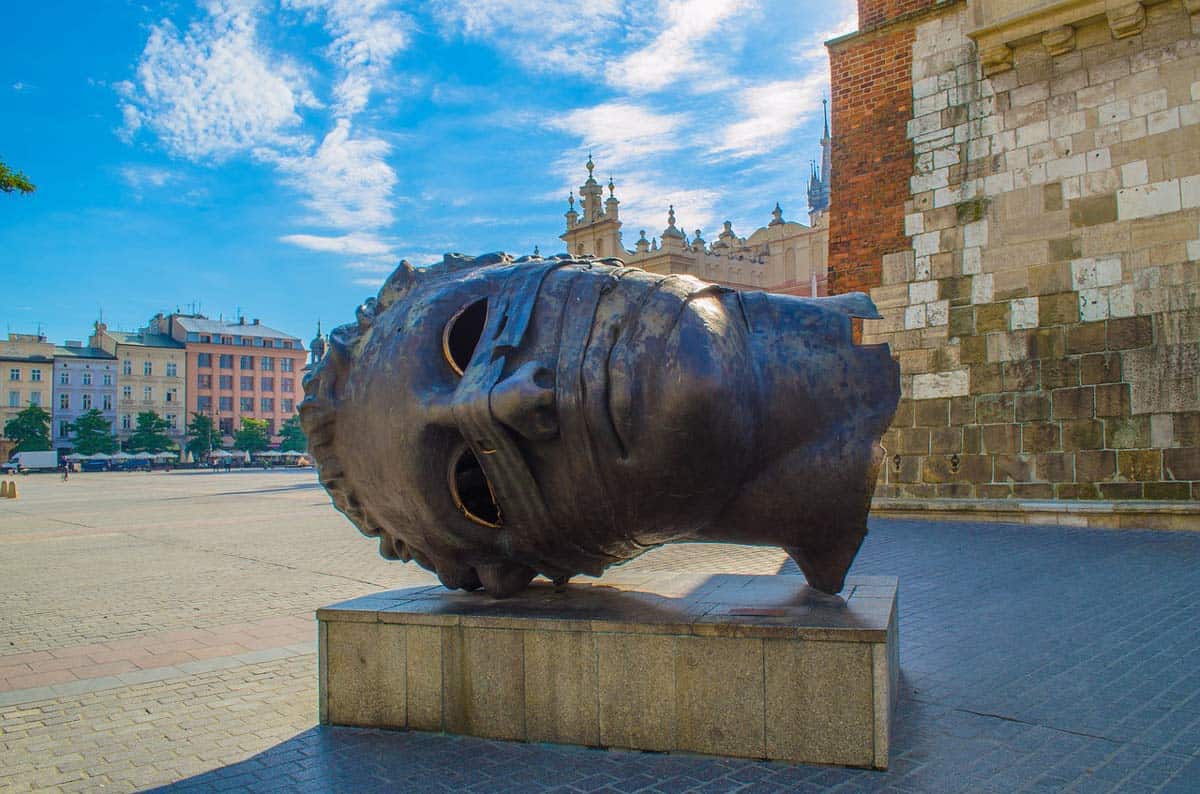
Editor’s Note: We share travel destinations, products and activities we recommend. If you make a purchase using a link on our site, we may earn a commission.
We did not want to go to Auschwitz-Birkenau. After all, it had taken us a lot of time and effort just to get to Krakow. The sun was out, and it was a perfect day. Pretty Polish girls walked by in summer dresses.
The cafes of Old Town were buzzing and there were buskers singing and juggling in the Market Square. Bike riders pedaled around the old castle moat while carriages pulled by horses that looked like huge black and white dalmatian dogs clattered by.
There were gardens and cathedrals to explore and huge platters of Kielbasa sausage and beer to taste. And everywhere you looked, there was a fantasy of an Old World city filled with castle towers, sculptures, spires, narrow alleys, elaborate door fronts, flower markets, shops, tourists eating ice cream, locals on roller skates, and in a word, “fun!”
To leave this to go to perhaps the single darkest place on Earth – the spot where men had inflicted unthinkable horrors on fellow men was….well, unthinkable. But there was no choice. We had to do it. But first, “the Good!”
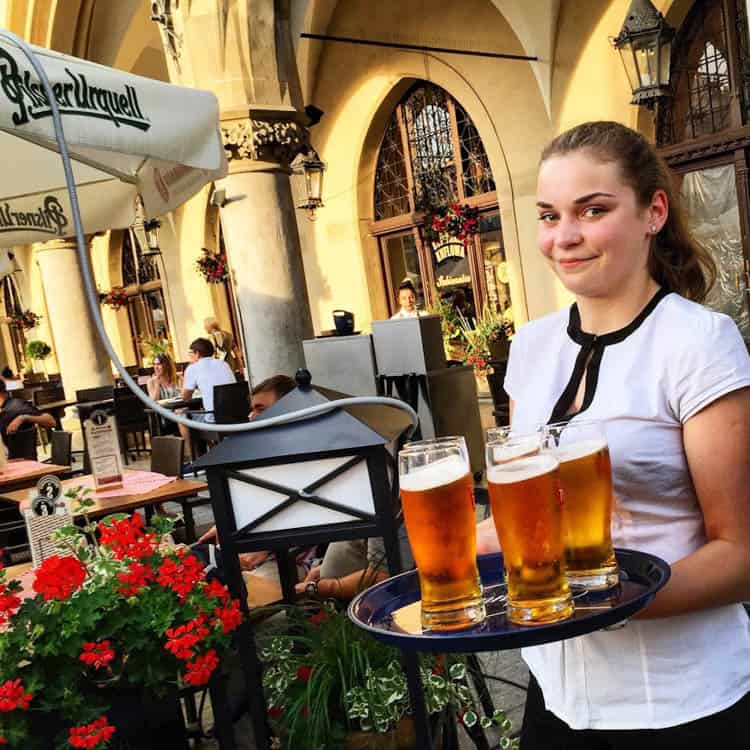
What to Do in Krakow – The Lighter Side
Krakow is a knock-out. It is not as large as Prague or Budapest, it doesn’t have the familiar history of a Paris, London or Rome, it wasn’t devastated and rebuilt like Berlin or Dresden, but inch for inch, what it does have, can match any of those cities for sheer beauty and excitement – all in a walkable compact area.
The Polish love beer and vodka and both were cheap and available everywhere, but especially great in Rynek Glowny, the largest medieval market square in Europe. The place is simply teeming with people and outdoor cafes. This is what makes Krakow Old Town a UNESCO World Heritage site.
The seven century old square is surrounded by restaurants, St. Mary’s Basilica, the Town Hall Tower and the incredible Cloth Hall, which may be the world’s oldest shopping center. The Cloth Hall sits in the center of Market Square and is Renaissance marvel built in 1555. It once sold silks, spices, leather and exotic goods.
See the Cloth Hall, St. Mary’s Basilica and more on the popular Old Town Walking Tour. Learn about the history of these important Krakow symbols with a local guide. Book your private tour here.
Today, it is filled with countless stalls selling tourist shot glasses, kitchen magnets, and amber jewelry, but the arched ceiling and setting still make it amazing, no matter what’s for sale. But it is the area around the square where the non-stop action takes place. One Thursday evening, we saw thousands of young people roller-skating round and round.
There are buskers dressed like Mongol warriors and Napoleonic Polish lancers, singers doing rock or Polish folk songs, traditional dancers, and stands selling Kielbasa (which means “sausage” in Polish – Kielbasa Krakowska, sausage of Krakow, is the most famous).
Other great street food treats are Maczanka Krakowska, a sort of pulled pork in a bun, and Obwarzanki stands – the “Krakow bagel” of ring-shaped bread topped with salt or sesame seeds.
The square is also a beehive of elaborate carriages pulled by colorful horse teams, the horses decorated with high feather plumes. Altogether, it is colorful, exotic and unforgettable.
Surrounding the Old Town is Planty Park – an area that used to be the moat surrounding the city walls and is now a circular river of a green park with bike paths and benches, gardens, cafes and picnics. We rented bikes and rode around and around, the whole experience like being in a movie.
Along the park is the Barbican and the Old City Walls, Wawel Hill (which is dominated by the 14th century Wawel Castle) and Kazimierz, the old Jewish Quarter of the city and another area filled with cafes, restaurants and beer halls.
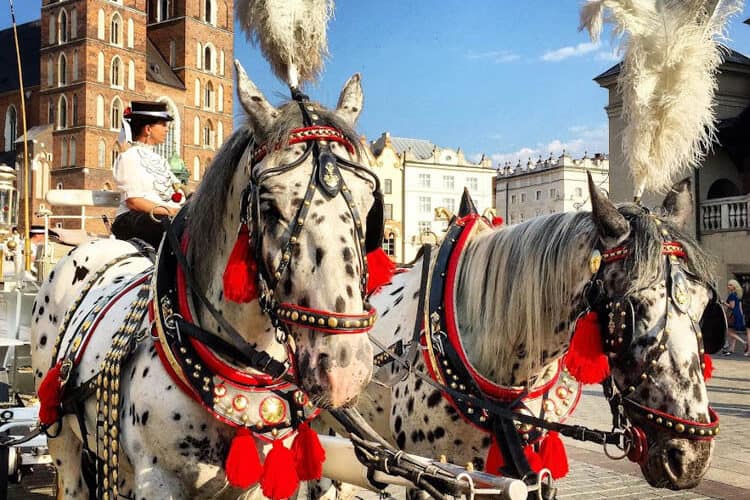
When my brother and I visited Krakow a couple of years ago, Kazimierz was booming as a popular international destination at night, especially for young people from England on bachelor and bachelorette parties, who swarmed this area because of cheap flights, inexpensive beer halls, and its party atmosphere.
Touts were roaming the streets to encourage young men into the beer halls, many of which had strippers. When one tout approached me and brother with the line, “Six beautiful strippers,” I had to mention, “The guy down the block has TEN beautiful strippers,” to which he seem perplexed. He thought about it, and then replied, “Ten! Ten??? You want ten strippers? I can get you ten strippers!!”
Hard to say what will happen after the pandemic, but it’s also hard to believe this area will not again be a night center with a slightly bohemian atmosphere of bars and beer halls. Of course, if you read Rick Steves’ guide, it is also filled with historic buildings, synagogues, art galleries and museums, one of which we actually visited.
Krakow resident Oscar Schindler was propelled from relative obscurity to international fame by the 1982 book, Schindler’s Ark by Thomas Keneally, and the Oscar-winning 1993 Steven Spielberg film, Schindler’s List, much of which was filmed right here in Kazimierz.
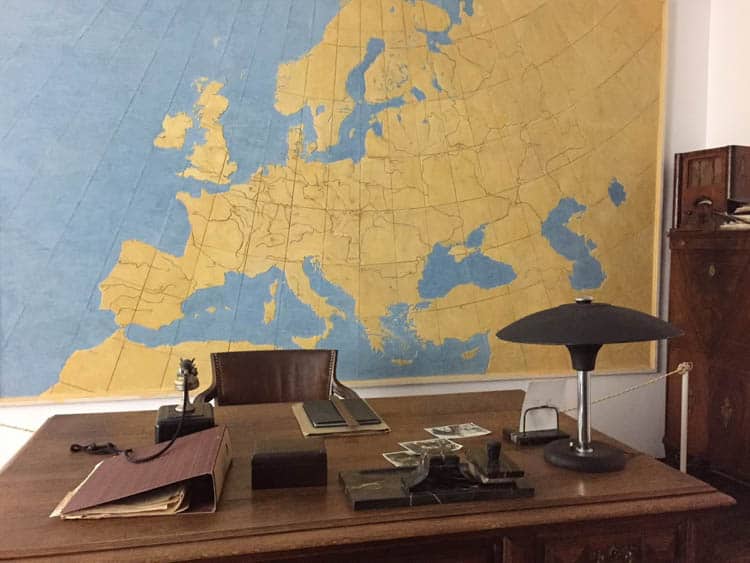
Schindler was a Nazi party member who during WWII took over operation of a former Jewish factory in Krakow manufacturing pots and pans with an enamel coating. But Schindler was different from other wartime industrialists. His factory workers, all Jewish, came from a nearby concentration camp.
Over time, Schindler became sympathetic and developed ways to give them more food, arranged for them to live on the factory grounds, created “vital” paperwork so they could avoid deportation to the death camps, and eventually moved them all to a new factory in what is now the Czech Republic.
Through his efforts, 1,200 Jewish concentration camp workers who would almost certainly have died were able to survive the war. Schindler lost his fortune in the effort and eventually died in poverty.
The site of his factory and office has become a major destination, and now tell not only his story, but the entire story of the Nazi occupation of Poland with the heroes who resisted, the collaborators who helped the Nazis, and the thousands – millions – of Poles and others who were caught up in the madness of Nazism and died in nearby concentration and death camps.
Before the war, one quarter of Krakow was Jewish , living in peace in this neighborhood with Polish Catholics. Here, at least in this museum, you can celebrate the basic kindness of some humans who will put their own life and fortune at risk to help others. But it’s time to move on to the bad.
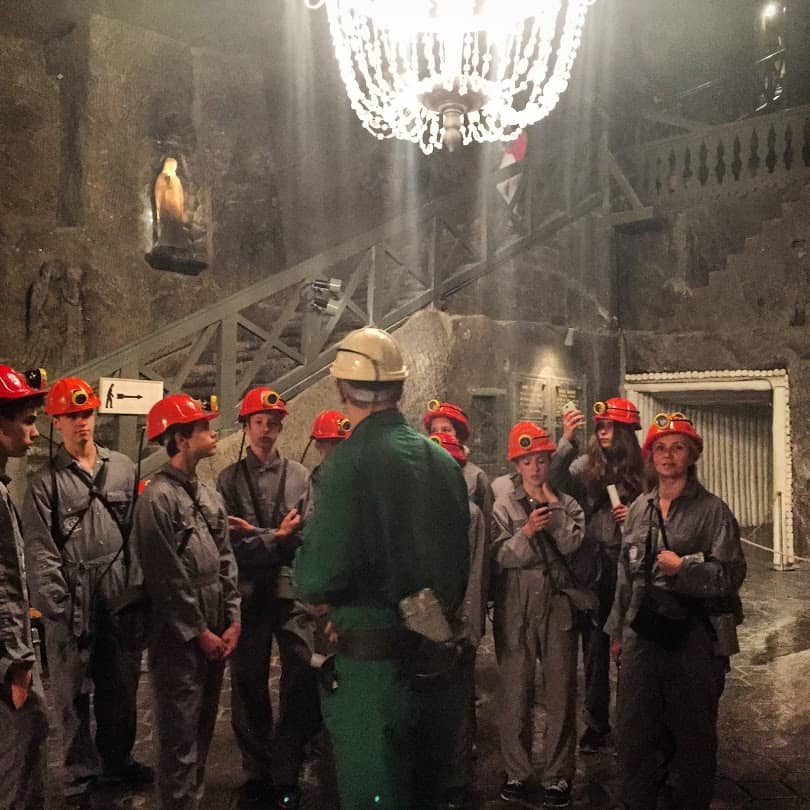
Experience the Krakow Salt Mines
I’m not sure if people still use the expression, but throughout much of my 50 years of working life, after a pleasant lunch with friends and co-workers, we would say, “Back to the salt mines.” The implication was a cynical thought that there was no job on earth quite as bad as working in a salt mine.
It must have taken centuries and centuries of sifting though all the bad jobs to determine that working in a salt mine was the worst. After all, we don’t say after a break, “back to the library,” or even, “back to the blacksmith shop,” or “back to cutting hay.” No. It’s “back to the salt mine” that has stuck, and probably with good reason.
One of the big attractions of visiting Krakow is going to the Wieliczka Salt Mines, alternatively promoted as the largest, oldest, most continually operated and other adjective-laden salt mines of the world. It is big.
You can witness the incredible underground sensation on this top-rated Wieliczka Salt Mine Guided Tour. Save your dates and book here.
You enter the mines by walking down 380 steps on a wood, circular staircase that never ends. The entire 1.8-mile walking tour involves going down 800 steps into a world where the constant temperature is 57 degrees. Bring a jacket.
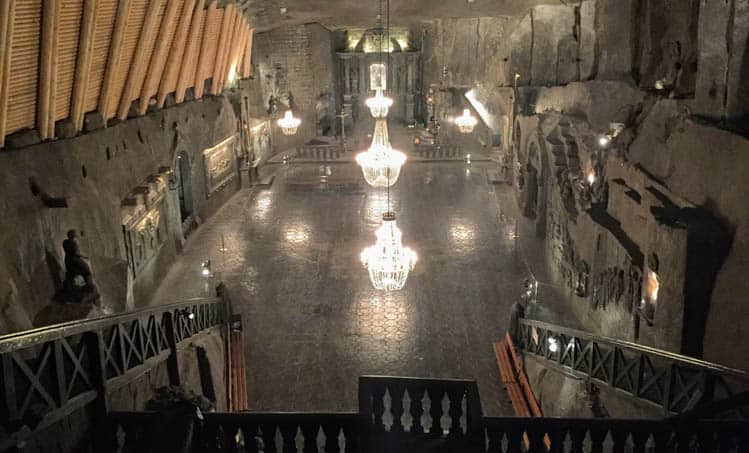
The salt mine has been here 700 years, being developed in 1368 by Polish King Casimir III the Great. You can only see 2 percent of the mine, thankfully, since there are 178 km of shafts. You’ll visit 23 chambers and four chapels carved out of salt, the Chapel of St. Kinga being the showstopper with a miniature of the Last Supper carved in salt.
For me, to be honest, the gift shop and cafeteria area were the most incredible, comprised of a huge, well-lighted cavern. Nicolaus Copernicus, Fryderyk Chopin, Pope John Paul II and that old salt mine worker Bill Clinton are among the many who have visited here.
The mines had two million visitors a year before the pandemic. And yes, working here was no picnic. The workers arrived in the early morning before sunrise and left after sunset, never seeing daylight. Horses that labored here carrying salt were born and died underground, never experiencing the outside world.
Although the salt mines were a hard place to work, they are very easy to get to. Every block in Krakow has people selling tours to the salt mines, but it’s just as easy to do it on your own and take their electric light rail trains to Wieliczka and walk to the mines through this pleasant town.
The trains could not be more modern. They are horizontal elevators (no driver). You get in, wait, it takes off, and electronic messages in English announce each stop. It’s a painful reminder of how much more technologically advanced in public transportation even Eastern Europe has become, compared to America.
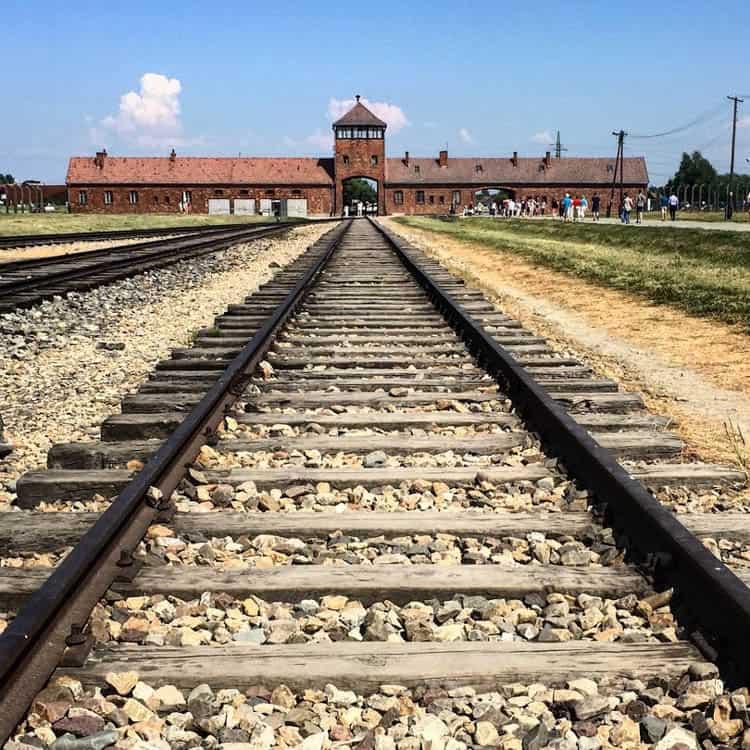
Reflect on Krakow’s Dark Past
So here we are, back on a stellar day, boarding a van with couples from Australia and Italy on an English tour bound for Auschwitz. It’s a two-hour trip there, and we’re all a bit nervous and after the usual, “where are you from?” chatter, the van grows quiet. Of course, we’ve all seen “Schindler’s List” and a dozen documentaries, and have a vague idea of what we are in for.
But nothing can really prepare you for Auschwitz. Your first impression walking around the camp is, “well, this isn’t so bad.” The Auschwitz concentration camp was row after row of brick dormitories, which have survived and from the outside at least look substantial.
It’s not until you hear how many people were crammed into each one and the lack of food, overwork, cold, inadequate clothing, lack of sanitary conditions and torture that went with them that you begin to understand. And then there are the rooms. In 1941, SS Reichsfuhrer Heinrich Himmler singled out Auschwitz as the site where the “final solution” would be enacted – the total eradication of the Jewish population.
With little emotion and few adjectives (they are not needed to induce horror and revulsion), your guide tells the story of how 1.5 million Jews and political prisoners from all parts of Europe were shipped here to Auschwitz-Bickenau in overcrowded rail cars.
The prisoners had been deceived into believing they were being relocated to new homes and factory jobs, so they brought along all their belongings. Upon arriving at the new adjacent death camp, Birkenau, they were told to leave their bags (the bags would be delivered to their new homes) and to proceed to showers to be deloused.
Those young and in better shape were pulled from the railcars and separated to go to work camps. After being divided into men and women and disrobing, the prisoners entered what appeared to be large showers, going so far as to have false shower heads on the ceiling. Some 2,000 people would enter the “showers” at the same time.
Then 5-7 kg of Cyclon B would be poured through grates creating a gas, and in 15-20 minutes all 2,000 people trapped inside would be dead. After shaving and collecting hair and knocking out gold teeth with hammers, the Nazis would move the dead naked bodies to incinerators or cremation pits.
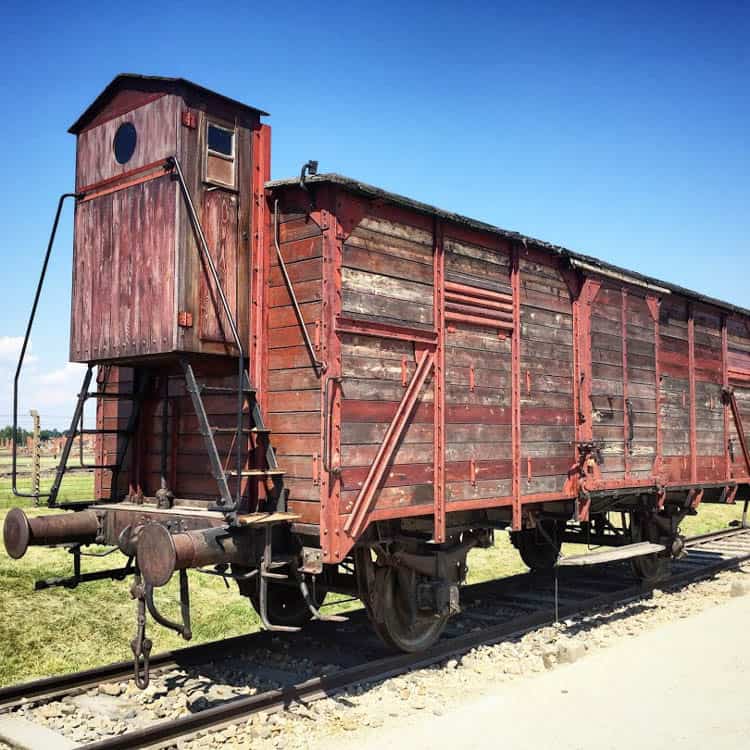
In the rooms of Block 4, you follow the process and see the few photos that were taken. In Block 5, no photos are allowed. Here, in room after room, you walk past glass walls, behind which are the possessions taken from the prisoners of Auschwitz before they were murdered. One room is filled with human hair, which the Nazis used to stuff sofas.
The next is spectacles and eyeglasses, then men’s shoes, then women’s. There is a room of suitcases. The Nazis were so methodical, the “fake” addresses of where the suitcases should be sent to mythical new homes are still written on them in chalk.
Then last, the one that will stay with you forever, there is a room stuffed from floor to ceiling with baby shoes. You leave the camp as you entered it, under the cynical gate sign: “Arbeit macht frei.” Work brings freedom.
The tour moves to Birkenau, perhaps more familiar since Schindler’s List was filmed here at the still existing railroad station.
The Nazis destroyed the furnaces and much of the camp, but there are historical markers to indicate where things were. Standing on the historic rail platform, it does not take much imagination to visualize the stunned passengers, getting off rail cars after sometimes a 1,500-mile journey with no food and little air and water, being met by guards with barking dogs and machine guns.
Being torn from their possessions and family, but being reassured, “yes, yes, after your delousing, everyone will be together in your new house.” But as you approached the shower building, the four furnaces next to it worked 24 hours a day, spewing the area with the dark black smoke of burning bodies.
There is no talk in the van ride back to Krakow, where a few stiff drinks are in order.
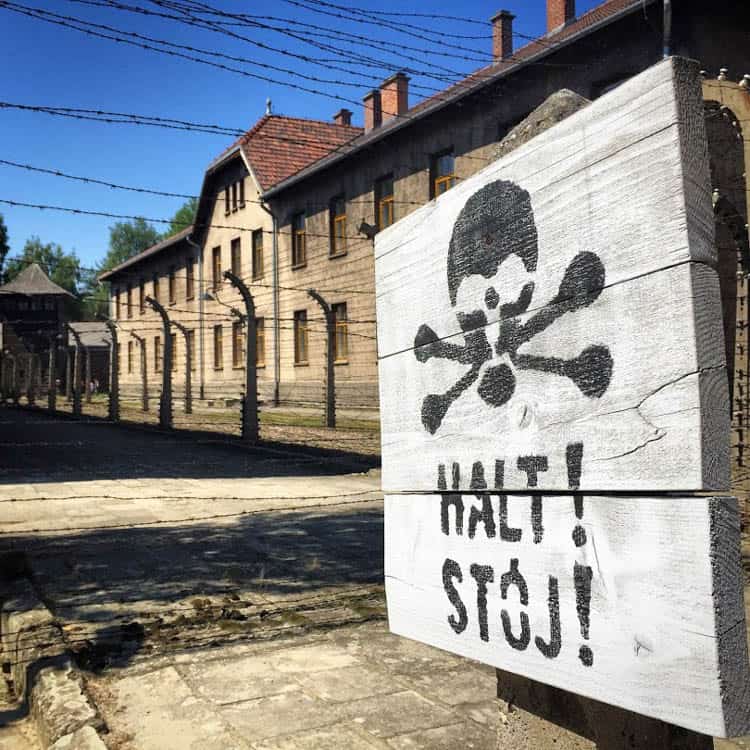
If You Go
Experience the significance of the area and learn about the camp and the memorial with an expert guide on this Tour of Auschwitz-Birkenau. Book your dates here.
It is impossible to predict how the pandemic will impact travel in 2021, however, the attractions mentioned are either 700 years old or infamous and will certainly be around long after things return to normal.
HOW TO GET TO KRAKOW: We arrived in Krakow in a fun way by taking a night train from Prague. You board the train at 10 pm in Prague’s main station and get your own little compartment with bunk beds and a sink (bathroom and shower down the corridor). Bring your own drinks on board and you can hang out in the corridor drinking with fellow adventure train travelers and swapping stories.
The train includes breakfast pastries and tea or coffee and dumps you (penniless) in Krakow station at 8 a.m. Penniless because Poland has a different currency system, but there are change booths and ATMs in the station to switch Czech money to Polish and be on your way. You will have to switch money if taking a tram or bus.
AROUND EAST EUROPE BY TRAIN: You can continue the intrigue and mystery of night trains by taking the midnight train from Krakow to Budapest. Polish rail equipment is not quite up to Czech Rail, but still adequate. Once again, you arrive penniless because Hungry also has a different currency, but easily fixed in the station at change booths that will take your unspent Polish money and convert it.
From here, you can continue the boom and bust scenario by taking still another train from Budapest to Vienna (unfortunately, the cities are too close to offer a night train) but you will have the pleasure of once again arriving in a new country without any local currency and will have to convert to Euros. An excellent idea from here is to continue an Eastern Europe tour by taking trains to Dresden and then Berlin (both of which take Euros!).
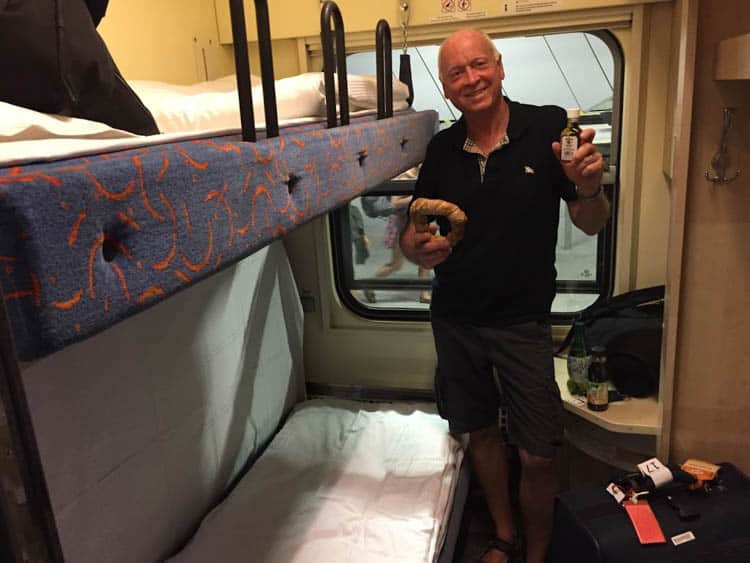
Book This Trip
Ready to learn more of the history of Krakow? Find everything you need to know, like hotel or VRBO options, best restaurants in each area and tips on other local sights through Travelocity and TripAdvisor. Find the best dates to travel and compare transportation rates here through FlightHub.
Author Bio: Rich Grant is a freelance travel writer in Denver, Colorado and a member of the Society of American Travel Writers and the North American Travel Journalists Association. He is, along with Irene Rawlings, co-author of “100 Things to Do in Denver Before You Die,” published by Reedy Press in 2016.
- The Low-Key Magic of Ghent, Belgium - April 22, 2024
- Discover the Hidden Charm of Extremadura in Spain - April 20, 2024
- Life of a Champion: Exploring the Muhammad Ali Center in Louisville - April 19, 2024
